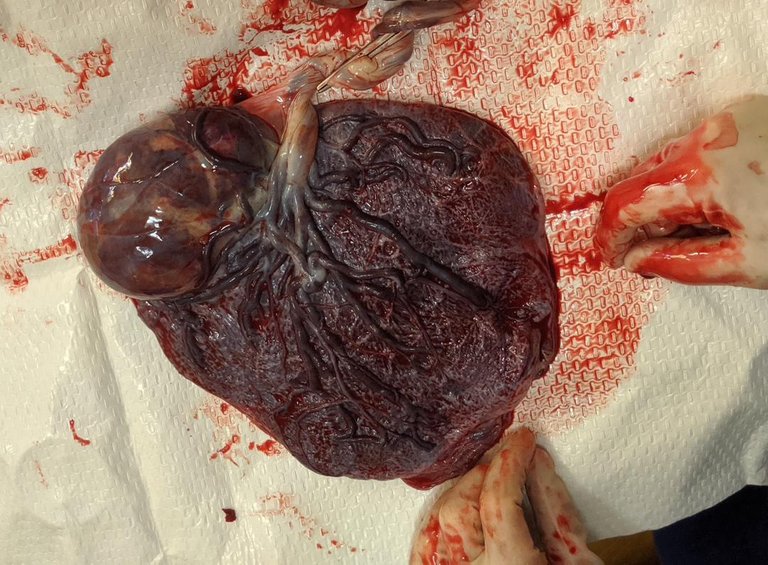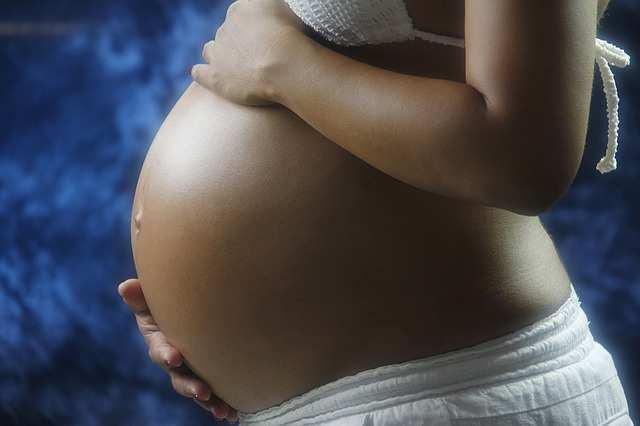In the Journey of understanding the women’s reproductive health.
Hello Hivers,Welcome to another educative post on midwifery series. Last week we got to know about the physiological changes in pregnancy. We understood that during pregnancy, a lot of changes take place in the body as a means to accommodate the growing fetus. We got to know about lordosis. The temporary tilting of the spine that takes place in pregnancy and also, all the factors responsible for the swelling of the hands and feet.
You might wonder, after the baby is born, what next?, Do the body go back to the initial size? How to the body adjust back to normal?
Well, Today, you will get to know about the physiologic adjustment of the body after pregnancy. In simple terms, How the body adjust back to normal after delivery.
I will like to start from the simple to the complex changes (as we were taught, lol).
It’s no new thing to anybody that during pregnancy menstruation ceases for the period. In fact! “Missing of period” is one of the classical signs of pregnancy. So how exactly do ovulation and menstruation reoccur after delivery?.

By Cory Falk - Own work, CC BY-SA 4.0, Wikimedia
Reoccurrence of ovulation and menstruation varies for different women. Generally, it returns 6 - 10 weeks after birth and in 50% of women, the first cycle occurs without ovulation. Effect of ovulation in menstruation. The return of ovulation is related to progesterone level.
Recall from my previous article, progesterone help the growth of the uterus and also, prevent it from contracting.
For Non lactating (breastfeeding) women, About 65% resume menstruation after 12 weeks. While for lactating mothers, About 90% resume after 6 months.
Just for clarification;
Increase breastfeeding = Increase progesterone = Decreased ovulation.
This mathematics above means, increased breastfeeding increases the secretion of progesterone which leads to the inhibition of ovulation.
This explains why breastfeeding is recommended as a natural form of family planning even though it is not an entirely reliable method. I mean, mothers who exclusively breastfeed have about 99.9% chances of not getting pregnant for at least 3 months as ovulation is delayed for at least 3 months.
Without ovulation and menstruation, pregnancy can’t occur.
Abdomen
After delivery, the abdominal walls appears loose and flabby. In grand multiparous women (women who have born more than one child), the abdomen may fail to regain its tone hence resulting in the separation of the rectus abdominus muscles (6- packs ab muscle). This condition is medically known as diastasis Recti Abdominis.
Stretch marks (striae) also occurs due to stretching and rupture of the elastic fibre of skin. Exercise is a major way to improve and strengthen abdominal tone.
Breast.
Again, the two most active female hormones prepare the breast for lactation.
Mathematically; At birth: Reduced progesterone = Increased prolactin = Milk production.
This means, After birth , the amount of progesterone in the circulatory system reduces thereby causing the increase of prolactin. Prolactin acts on the alveoli of the mammary gland to initiate milk production.
Gastrointestinal tract
There is an increase in hunger and thirst immediately after delivery. Thirst increases to replace fluid lost in urine and sweat during labor.
There is reduced bowel movement for 2-3 days due to;
- the decreased abdominal tone.
- effect of progesterone which reduces GIT motility.
- fear of increased pain from episiotomy.
- effect of anesthesia.
Urinary System
Immediately after birth, there is an increased renal action due to increased blood volume and excretion of waste products which leads to Increased urination (medically known as peurperal diuresis).
Increasesd renal action occurs within the first 7 days and resolves after 2-3 weeks. Peurperal Diuresis occurs due to;
- increased filling of the bladder.
- decreased capacity of the bladder. (Due to the weight of the uterus on the bladder)
Cardiovascular System
During pregnancy, blood volume increases to prepare for blood loss at birth. During normal delivery, about 500 mls of blood is lost at birth and 800 - 1000 mls for delivery through cesarean section. Blood increase at delivery due to;
- expulsion of the placenta after delivery which diverts about 500 - 750 mls of blood flow (blood flowing to and fro fetus) into maternal systemic circulation.
- rapid reduction of the size of the uterus.
- increased blood flow to the vein due to relieve of compression by the pregnant uterus.
- movement of fluid accumulated in pregnancy.
Increased body fluid due to increased blood volume is removed by diuresis (excessive urination) and diaphoresis (excessive perspiration) during postpartum period.
Generally, recovering fully from pregnancy varies for different women as it can last for 6weeks to 12 weeks. Variation in recovery also depends on the type of delivery and pregnancy.
Some Tips to help hasten healing after delivery.
Warm Sitz Bath.
It helps provide comfort, reduce pain, increase circulation to tissue, increase healing and reduce risk of infection.
Healthy Diet.
The benefit of a healthy diet cannot be overemphasized. After delivery, most women are at risk of constipation which is majorly due to decreased abdominal tone and GIT motility.
Exercise
As I mentioned earlier, exercise doesn’t only help strength abdominal muscles but also the perineal muscles. Kegel exercise is the most recommended exercise after delivery.
Postpartum is the period during which the woman adjust physically and psychologically to the process of child birth.
It begins after childbirth and continues for about 6 weeks until the body has returned to its pregravid state.
Different Types of Kegel Exercises and their effects in postpartum.
Pelvic Floor Exercises
It focuses on the pelvic floor. It involves contracting and releasing the pelvic floor muscles in order to tighten the muscle. It helps to stop urinary incontinence that occurs after delivery.
Diaphragmatic Breathing
It involves lying flat with the back with one hand on the chest and one on the stomach, taking a deep breath and exhaling slowly. This help to reduce the rate of breathing which increases in pregnancy.
Swiss Ball Bird Dog Hold
It involves lying with the back on a ball with the toes on the ground, then lift left foot with right arm and vice versa. It helps reduce posture and low back pain.
Cat - Cow in Table Top.
It involves lying with the back flat, knee flexed with feet on the ground, inhale and move spine up and down for 60 seconds. It helps to relieve back pain and increase circulation.
I hope with this, you can understand how the body adjusts back to normal after delivery.
References

Nature is amazing. Women are awesome!
We need more women to have more babies because the earth needs many more people!
Women are absolutely amazing. But really? Earth needs more people?.
"Over"-population is not the problem. Over-consumption is the problem. Poor people in Africa having tens of kids don't affect the planet negatively. If the planet's population stops growing above replacement level (~2.1 children per couple), we are financially doomed.
Financially doomed? I can’t say the same.
If the population does not grow above replacement level, that means the average age of the population will get older and older, like in Japan where the average age is now ~48 years old. That means a greater percentage of the population is retired, i.e. does not work. This is economic doom. That's why countries worry a lot about birth deficits.
This makes sense now. Thanks @alexanderalexis for the clarification. It’s good to have you here.
Yes. I think that people are an asset both to themselves and others. I think that the earth can sustain many more people. Maybe 10 times the current population. I think that the hunger and poverty that exists today is not caused by overpopulation and/or lack of resources... but the cause is: central planning, authoritarian governments interfering with voluntary action and trade. If humans are left alone to think and act freely, the world will become a happy, peaceful and abundant place.
People are awesome.
Well, looking at the state of my country Nigeria. I can’t agree with you less. Over population isn’t our problem really. But the people themselves are the problem. The evil nature of men is our problem. So I feel we should deal with the ones we have instead of topping the number without topping their value. My thoughts exactly.
Thanks for your contribution to the STEMsocial community. Feel free to join us on discord to get to know the rest of us!
Please consider delegating to the @stemsocial account (85% of the curation rewards are returned).
You may also include @stemsocial as a beneficiary of the rewards of this post to get a stronger support.
Thanks @stemsocial.
Congratulations @silviafx! You have completed the following achievement on the Hive blockchain And have been rewarded with New badge(s)
Your next target is to reach 6000 upvotes.
You can view your badges on your board and compare yourself to others in the Ranking
If you no longer want to receive notifications, reply to this comment with the word
STOPCheck out our last posts:
Support the HiveBuzz project. Vote for our proposal!